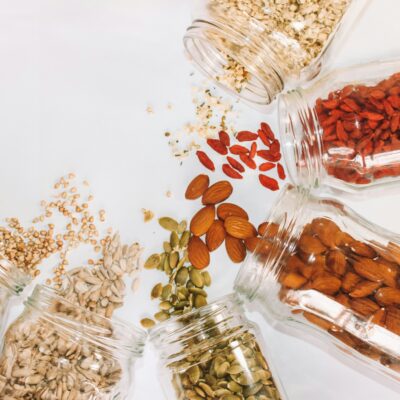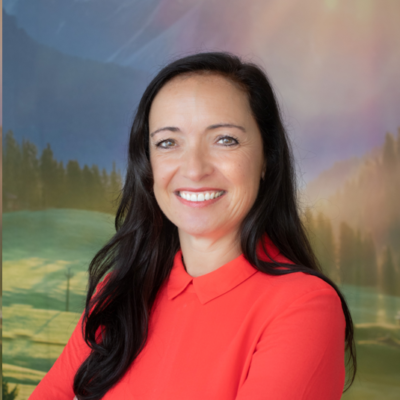
“It is extremely important to be able to see the early signals, what is really emerging in the market, what’s coming up new… that we are not currently aware of”
Back in May, the third edition of the Food & Intel Fireside Chats was published, the podcast series where experts in the industry discuss AI and its innovative application in food risk prevention. This time Nikos Manouselis, CEO at Agroknow welcomed Asli Solmaz-Kaizer, CEO of iComplai talk about how AI is utilized to forecast future risks in ingredients & products while meeting food safety compliance.
During the enlightening 30-minute episode the two delved into topics such as:
- the importance of understanding customers to make data meaningful and actionable.
- the challenges of managing and maintaining the data, as well as analyzing it.
- the case of forecasting future risk when trying to expect the unexpected.
- how the ethylene oxide crisis demonstrated highlighting the need for early signals and preventive measures.
- the potential of AI tools to democratize knowledge and improve various sectors, including food safety.
Watch the full episode here.
Here’s a short snippet of the interview:
Nikos Manouselis: Your experience being in their shoes and being in the market, on the product safety side has been of value now that you are in a different role designing and thinking and offering solutions. That's very interesting. I really like this approach. And then she also said intelligence and these technologies like AI to see what is coming up. I want to hear more about this.
Asli Solmaz-Kaizer: Uh, yes. So how we want it I think it's again about. It's about how we are actually, it's about the use, how the people are using the UM, it's about how the people are using the systems and that's what we look at. What do people want to predict? And so, one of the things, so for instance at the that will be presenting in two weeks’ time is the case of ethylene oxide, so most of the time, actually the prediction is more requested.
When people meet a situation that they did not expect, and then they start thinking, what could I have done? Why did I miss this? What could I have done to be able to expect this risk or what can I do now so that next time I'm not caught unattended.

Nikos Manouselis: What can I have done so that I was not caught not expecting it and what can I do now so that next time it doesn't happen again?
Asli Solmaz-Kaizer: Exactly. Exactly So, so one thing for instance, we saw that in the case of ethylene oxide, I think the whole food industry is common point. You know, anytime you meet somebody, anywhere, you can start talking about it, ethylene oxide, and the conversation flies. So after this ethylene oxide situation we did, there was a request from the market, really, what could I have done to expect? Why did I miss it? What could I have done to avoid it? And that is why actually taken with this question and also pesticide is a risk that you don't know it if you don't test it, you know? It's yeah, it's just pretty difficult to predict if you are not aware of the market practices.
And yes, so that's why we developed a test to predict in which we actually are able to predict the pesticides that are likely to come on a certain raw material. And this helps basically manufacturers to be better prepared for, for what may come.
Nikos Manouselis: So, I will ask you more about this, because I'm really interested you know this. But I want to come back to the two scenarios in crisis or risks that you described. The ethylene oxide crisis and the case of pesticide residues in raw materials.
In my eyes and understanding they have also some differences in the sense that I remember when the ETL crisis hit the market it was something unexpected and new. So, we couldn't expect this historically. It's not that we had past history. So, it started happening week after week. The recall here, a recall there.
And what we are saying, what I was thinking when we were looking at the data was that the best that we can do is to very quickly identify these early signals and understand that something is going wrong.
I want to hear your thoughts about the way that I'm thinking about this. What do you think? Maybe there's something more that you have from.
Asli Solmaz-Kaizer: I mean, definitely this is extremely important to be able to see the early signals, what is really emerging in the market, what's coming up new that is currently that we are not currently aware of. So, this is extremely important, and you may even sometimes, I don't know, see what is actually something that's coming up for a certain substance, for instance. Even if it's not necessarily for the raw material that you're looking for to understand, is this something that I may expect for my own raw materials as well?
Nikos Manouselis: We're saying that this is the kind of early warning that you're also talking about, that something is happening. Maybe I'm looking for it, or maybe not. And I pick up very quickly the signals.
And then you mentioned the second scenario in the way that I think about this, maybe I'm wrong, just thinking out loud now the residue case. This is where we have more data of something that we have been testing for many, many years and the trends are a little bit more long term. What do you see in the data that you look up? How, how do you see these kind of problems?
I was thinking that in the case of pesticide residues, this is a signal that is not something unexpected, but it's something that we constantly look for. So maybe we look for something that we do expect, but we want to catch it before it goes above limit. But maybe the way that I think about this is oversimplifying things, so I want to hear your opinion.
Asli Solmaz-Kaizer: OK, so I think you're right. Pesticide residues are not a new risk, definitely. But I think the question is which pesticide residues? You know? And so, in the case of ethylene oxide, of course, everybody knew that there could be pesticides.
But nobody thought that ethylene oxide could be in there and there are thousands of pesticides out there. It is also practically impossible for a purchaser to test for all possible pesticides that may or may not be used on this product. It's just, economically, it's simply not feasible. It's also not necessary. So, I think it's important that you know what you are going to look for.
Nikos Manouselis: So, what I hear you say is that the range of products agro-chem products that are being used have so many potential contamination residues, chemical contamination residues, that understanding and looking at the data about what kind of chemical contaminants we see on their eyes is essential to decide then what should we be focusing on.
Want to know more?
You can watch the discussion on our YouTube channel here, or listen to it on our Spotify account here.
Want to receive helpful food safety intelligence in your inbox?
 Funding for this research has been provided by the European Union’s Horizon Europe research and innovation programme EFRA (Grant Agreement Number 101093026). Funded by the European Union. Views and opinions expressed are however those of the author(s) only and do not necessarily reflect those of the European Union or European Commission-EU. Neither the European Union nor the granting authority can be held responsible for them.
Funding for this research has been provided by the European Union’s Horizon Europe research and innovation programme EFRA (Grant Agreement Number 101093026). Funded by the European Union. Views and opinions expressed are however those of the author(s) only and do not necessarily reflect those of the European Union or European Commission-EU. Neither the European Union nor the granting authority can be held responsible for them.








